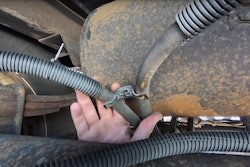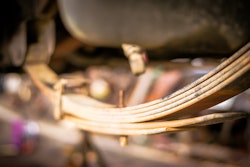
In-house fleet maintenance refers to a company’s decision to handle 90% or more of their vehicle maintenance and repairs internally. Outsourced fleet maintenance involves hiring a third-party provider to manage these tasks. Companies with longer trade cycles (or larger fleets) tend to prefer in-house fleet maintenance, while companies with multiple OEM’s, a multi-location footprint, or those leasing equipment prefer outsourcing.
In-house fleet maintenance
There are benefits and challenges to fleets doing their own maintenance. There are, however, three main benefits to keeping maintenance in-house.
• Control: In-house maintenance gives the fleet complete control over the maintenance process (including scheduling), quality of work and cost.
• Familiarity: The in-house maintenance team knows the company’s equipment and maintenance history, which can help then identify issues more quickly and accurately.
• Cost-effective: In some cases, in-house maintenance can be more cost-effective than outsourcing, especially if the company has a large fleet of vehicles
There are also three main challenges to keeping maintenance in-house.
• Labor cost: Hiring and retaining skilled technicians can be expensive and can require significant investment in both tools and equipment.
• Downtime: When equipment is being repaired or maintained it is not available for use, which can lead to downtime and lost productivity.
• Expertise: In-house technicians may lack specialized knowledge or experience to diagnose and repair certain problems.
Outsourced fleet maintenance
Obviously, there are benefits for fleets to turn maintenance over to an outside service provider.
• Reduced Costs: Outsourcing fleet maintenance can reduce labor costs because companies can avoid the need to hire and train in-house technicians.
• Flexibility: Outsourcing provides more flexibility in scheduling maintenance and repairs, as companies can work with service providers to ensure equipment is serviced at the most convenient times.
• Expertise: Outsourced service providers typically have a deeper level of expertise in fleet maintenance and can provide more specialized services.
Too, there are drawbacks.
• Loss of control: Outsourcing fleet maintenance means giving up some control over the maintenance process, including scheduling, quality of work, and cost.
• Communication: There can be communication issues between the service provider and the company, which can lead to delays and miscommunications.
• Quality of work: Companies must rely on the service provider to deliver quality work, which can be a concern if the provider is not up to par.
When you look at the way organizations approach fleet maintenance, it’s not a simple decision. Twenty percent of fleets do maintenance in-house, 46% use outsourced service providers, and 34% use a combination of both.
Ultimately, the decision to use in-house maintenance, outsourced maintenance, or a combination of the two, depends on a company’s specific need, budget and expertise. Both approaches have their advantages and disadvantages, and companies must carefully evaluate these factors before making a decision.











